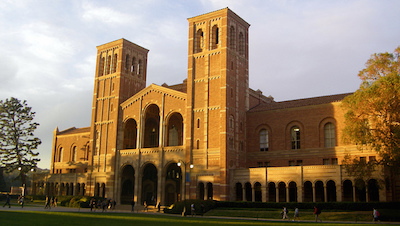What are the Different Kinds of Colleges in the U.S.?
Each country has its own model for education. In the United States there are a few types of colleges: public, private and for-profit. Within those categories, there are different kinds of colleges such as two- or four- year universities or online schools.
Private
Many colleges or universities are privately owned. Some have religious affiliations. These institutions typically rely on tuition, fees and private funding, because they are not subsidized by the government. Tuition at these universities typically costs more than it would at a public university.
The eight Ivy League universities are examples of private colleges. They include:
- Brown University
- Columbia University
- Cornell University
- Dartmouth College
- Harvard University
- Princeton University
- University of Pennsylvania
- Yale University
Other prestigious universities are also private, but not members of this elite group. Some examples are Massachusetts Institute of Technology, Stanford University, and New York University.
Public
Public universities or colleges are partially funded by local and state governments. These institutions are typically able to offer lower tuition to students, particularly those who live in the state where they are attending school. Many public colleges are prestigious universities. Some examples include:
- College of William & Mary
- Miami University
- University of California
- University of Michigan
- University of North Carolina at Chapel Hill
- University of Texas at Austin
- University of Vermont
- University of Virginia
For-profit
For-profit colleges generally prepare students for specific career paths. They are a relatively recent trend, as most colleges are non-profit. For-profit colleges are in the business to make money. Many offer classes online, but these institutions usually have high tuition. Studies have shown that many students graduate with debt, and are unable to find a job.
The terms public, private and for-profit alone do not fully describe all types of American colleges from which a student can choose. Universities are often subdivided into categories that are determined by their content or by the length of the program.
Two-Year Colleges
These institutions are sometimes referred to as junior colleges or community colleges. Students can earn an associates degree, which tend to be limited in scope and focus on a specific area, often technical. These degrees are frequently intended for individuals who want to receive training in a specific career or trade.
Some students attend community college for the purpose of preparing to transfer to a four-year institution. This can be an effort to save money or for a student to improve his or her transcript in order to gain admission to a more prestigious institution. Others may simply need more time to figure out what degree they hope to earn.
Two-year colleges tend to be state or federally funded, although a few are private institutions. There are 986 publicly funded Community Colleges, according to the American Association of Community Colleges (AACC).
Four-Year Colleges/University
A four-year college may be public or private. Students who complete their undergraduate studies at a four-year college earn a bachelor’s degree in the arts (BA) or sciences (BS). Once a bachelor’s degree is earned, students can choose to take a step further and obtain a masters or even a doctorate in their field.
The Ivy League and Public Ivy colleges are four-year institutions. Four-year colleges or universities may cater primarily to undergraduates, though many also have graduate programs with students working toward earning a master’s or doctorate.
A Final Word
American universities and colleges offer a wide choice of courses and approaches from which to choose. They may offer general courses or a liberal arts education, while other schools specialize in research or technology. Ultimately, factors such as funding, location, interests, and long-term goals will determine the best route for a prospective student.
Photo: UCLA. Credit: jojolae / Flickr





1 Comment